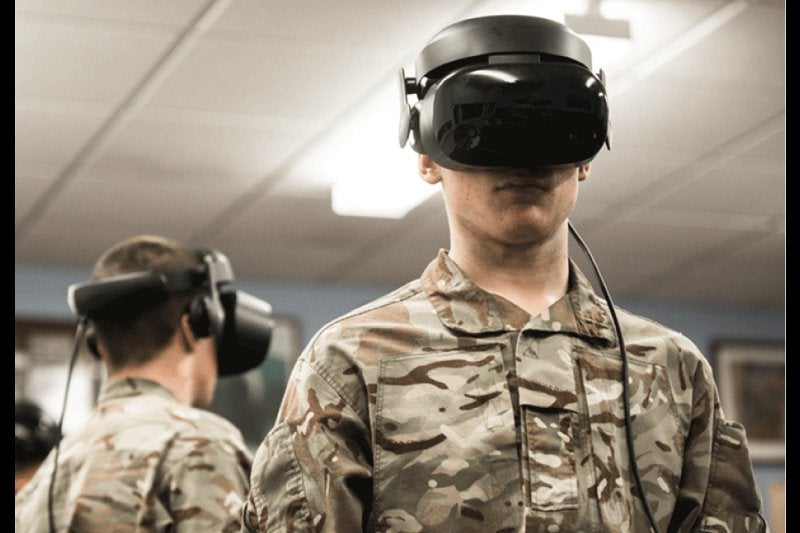Tech companies are continually working on expanding the VR ecosystem and positioning it as the next major computing platform, after smartphones. Below, we list the market leaders and challengers in each segment of the VR value chain.
Listed below are the key macroeconomic trends impacting the VR industry, as identified by GlobalData.
Moving beyond the hype
Untethered VR headsets and more compelling content – including films, video, and games – are driving the adoption of VR across consumer markets. In March 2019, Sony announced that it had sold more than four million PSVR systems worldwide since it was released in October 2016. One long-standing barrier for VR adoption – price – is also coming down. At the time of writing, the HTC Vive is available for less than $500, Facebook’s Oculus Rift for under $400, and the PSVR at sub-$300. Familiarity with VR is also improving, with a Greenlight Insights study of US consumers finding that 78% were aware of VR in 2018, up from 45% in 2015.
Generation Hashtag
A preference for personalised experiences and an inclination towards digital platforms makes Generation Hashtag a key demographic for VR companies. For example, Google is marketing Cardboard VR to young people as an introductory device, while the Facebook for Education community is working with college and university students to build the future of VR.
Content
While VR hardware is improving, the industry still lacks a significant amount of content. With adoption increasing, VR content creators should utilise the opportunity to build their brand image before the industry hits the mainstream. Gaming headset Oculus Quest sold content worth approximately $5m in the two weeks after its launch in May 2019. VR content creators should focus on areas such as films, video, ecommerce, healthcare, gaming, and social media.
Enterprise adoption
A number of enterprises are using VR for specific tasks. For example, Air France offers passengers VR headsets, while Walmart, Airbus, and Verizon use VR as part of employee training programs. That said, VR’s position in the enterprise market is under threat from AR. The likes of Microsoft HoloLens, Vuzix smart glasses, and Google Glass Enterprise Edition are already established in several vertical markets.
China
China is the biggest market for virtual reality. PwC estimates that China will use over 85 million VR headsets by 2021, compared to 68 million in the US. Chinese internet cafes, social game rooms, shopping malls, arcades, and theme parks are providing easy public access to high-end VR headsets and increasing VR awareness. Baidu’s online video platform, iQiyi, has its own range of VR headsets, while Alibaba has introduced VR shopping malls and Tencent is working on a VR version of WeChat. Firms such as Pico, Huawei, 3Glasses, Deepoon, and AntVR are trying to democratise VR with reasonably-priced devices.

US Tariffs are shifting - will you react or anticipate?
Don’t let policy changes catch you off guard. Stay proactive with real-time data and expert analysis.
By GlobalDataWith specific focus areas – including chips, display, 3D modelling, motion capture, data processing, tactile feedback, and localisation – clearly set out in the government’s VR masterplan for 2020, 2025, and 2030, China’s determination to dominate the VR space puts it ahead of other countries.
Business models
Virtual reality business models are evolving. Enterprise and business-to-business (B2B) sales are dominant, but several multi-model approaches are also emerging. Facebook is serious about enterprise VR, yet its key offerings – including sophisticated hardware, premium apps, and in-app purchases – are largely consumer-focused.
Samsung, Google, and HTC are competing on similar lines to Facebook, with HTC’s well-received management software for enterprise applications putting it ahead of its peers. Microsoft offers VR experiences on Windows Mixed Reality headsets, as well as more than 2,500 VR game titles on SteamVR and Microsoft Store, available with a subscription.
Intellectual property (IP) disputes
IP infringement is seen as a prime legal risk by nearly 30% of companies developing immersive technologies, according to a 2019 survey by law firm Perkins Coie and the XR Association. Virtual reality’s ability to replicate a wide range of images, properties and other content in virtual spaces creates the potential for IP disputes around trademarks, copyright, and patents.
While patents are largely held by big firms, many of the cutting-edge technology trademarks and copyrights are owned by start-ups. In 2018, Facebook settled a lawsuit brought by video game company ZeniMax, which alleged that Facebook had stolen company secrets and technology for use in Oculus products.
Smartphones
Untethered devices are allowing VR to operate as a separate platform, but smartphones are still a formidable barrier to VR’s success. The view of VR headsets as smartphone accessories, along with the growing mobile AR segment, is negatively impacting VR’s market penetration. Despite limited user-experience, convenience and developer familiarities are enabling smartphone AR to establish a strong position in the market.
From social media platforms like Snapchat to ecommerce players such as Shopify, app-based companies are attempting to leverage the association of smartphones and AR. At the same time, Google’s VR initiatives are showing signs of deceleration as it shifts its focus to mobile AR. Facebook has confirmed that it is working on AR smart glasses, although its VR ambitions still remain.
This is an edited extract from the Virtual Reality in Aerospace and Defense – Thematic Research report produced by GlobalData Thematic Research.






